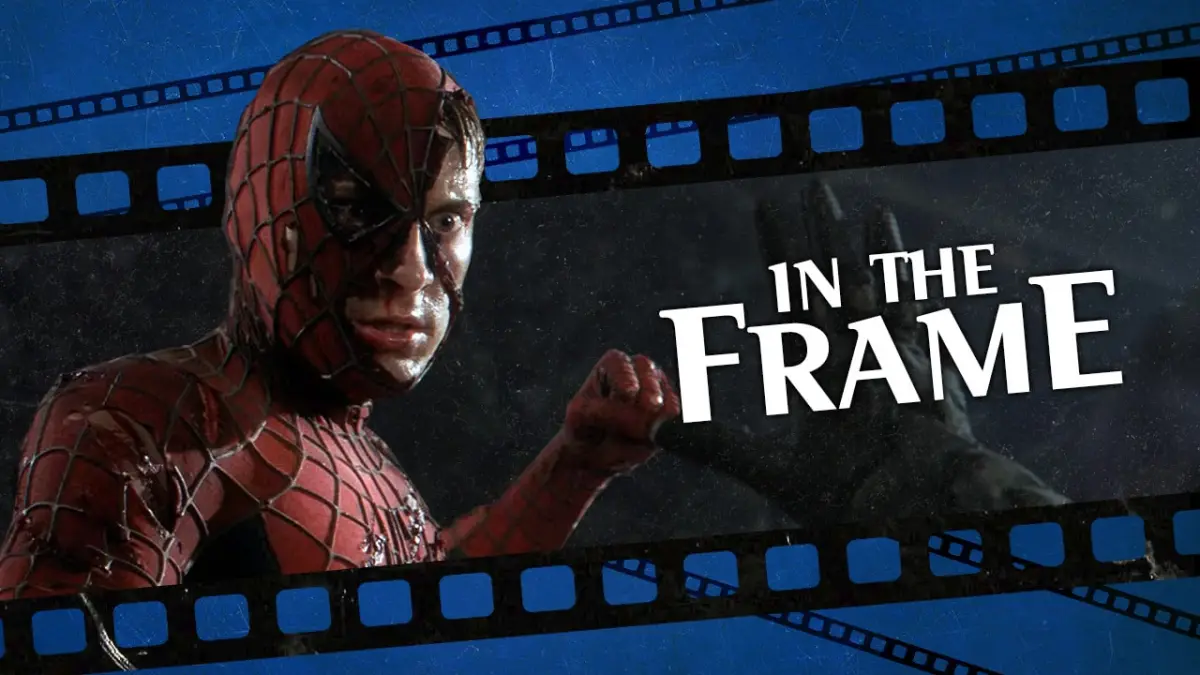There is something refreshingly intimate about the stakes of Sam Raimi’s Spider-Man trilogy. Raimi’s three films are built around a fairly simple question: Will Peter Parker become a good man?
Historically, superhero comics have been aimed at a young male audience. There is some truth in the oft-repeated cliché that superheroes are “soap operas for boys.” It’s easy to see this target market reflected in the familiar tropes of the genre. As with many young adult heroes, a lot of the classic superheroes are orphans — capturing that sense of freedom for which many teenagers yearn. That’s to say nothing of the theme of body transformation that undoubtedly resonates with teenagers.
The original Spider-Man comics written by Stan Lee and illustrated by Steve Ditko tapped into this, focusing on a teen protagonist balancing the demands of catching criminals and helping his kindly old Aunt May pay the bills. Stan Lee argued that Spider-Man was “probably the first comic book hero that teenagers themselves could identify with.” Growing up was a part of this. It’s notable that Peter actually aged over the first few years of the comic, graduating high school and going to college.
This is very much the arc of Sam Raimi’s Spider-Man trilogy. As ever, Uncle Ben (Cliff Robertson) is more than happy to provide the thematic exposition. “Peter, these are the years when a man changes into the man he’s gonna become the rest of his life,” Ben explains to his young nephew in the original film. “Just be careful who you change into.” Of course, that idea of transformation is rather more literal for a teenager bitten by a radioactive spider.

As he tries to come to terms with his powers, Peter’s moral transgressions are small. He beats up a bully at school. He uses his powers to win a wrestling match to earn some money to buy a car to impress Mary Jane (Kirsten Dunst). Although Spider-Man 3 somewhat complicates matters, Peter’s worst decision is one of inaction, allowing a thief (Michael Papajohn) to escape when he could easily have stopped him. None of these are unforgivable. None of these are particularly epic in scope.
This tension continues through the films that follow, even after Peter commits to wearing the blue and red leotard. Spider-Man 2 finds Peter desperate to shrug off the responsibility that he has assumed, to return to a life of passivity and inaction. “Am I not supposed to have what I want?” he asks at one point. “What I need?” It’s a fair question and an earnest one. Raimi’s Spider-Man movies suggest that being a good person takes work. It is a constant effort, rather than a simple goal.
In this sense, it’s interesting to contrast the questions of morality that run through Sam Raimi’s Spider-Man trilogy with a lot of the more modern superhero genre. So many modern superhero films are built around the idea of the power fantasy, the idea that having access to that sort of power is thrilling and intoxicating rather than something that requires introspection and reflection. To mangle the original quote, “with great power comes great responsibility.”
Many modern blockbusters weave moral ambiguity into their storytelling, suggesting that these characters are not as heroic as they might appear. In Batman Begins, Bruce Wayne (Christian Bale) leaves Ra’s Al Ghul (Liam Neeson) to die. In Avengers: Age of Ultron, Tony Stark (Robert Downey Jr.) builds an omnicidal robot (James Spader) that almost destroys mankind. Even in Spider-Man: Far From Home, Peter Parker (Tom Holland) wears a suit with a “kill mode” and commands a fleet of tactical drones.

However, as with so much else in modern superhero movies, the scale is often blown way out of proportion. It might also reflect the extent to which modern pop culture has abandoned earnestness for detached irony; the only moral transgressions worth measuring are those with a body count. In comparison, Sam Raimi’s Spider-Man trilogy seems achingly sincere in its question of whether Peter will be a good person, acknowledging that his moral failings are more relatable and more low-stakes.
Raimi explicitly genders the question of whether Peter will be a good man. Despite their bright, wholesome technicolor aesthetic, there’s a surprising amount of sexuality at play in Raimi’s Spider-Man films, particularly in contrast to the modern sexless blockbuster. That sexuality is present in the implied sexual violence and the wet shirt before the iconic upside down kiss, in Peter’s sticky hands, and even in Harry Osborn’s (James Franco) pie-eating grin.
As such, it’s notable that one of the key measures of Peter’s “goodness” through the trilogy is his behavior towards Mary Jane and the other women in his life. Mary Jane is treated terribly by the men around her. Her father tells her that she is “as stupid as (her) mother.” Her boyfriend Flash (Joe Manganiello) tells her not to “scratch the leather” on the sports car he got for his birthday. Harry’s father Norman (Willem Dafoe) is very explicit about how his son should treat Mary Jane.
Norman is secretly the villainous Green Goblin, but it’s telling that his villainy manifests through a bitter strain of misogyny. “Do you think a woman like that is sniffing around because she likes your personality?” he asks Harry about Mary Jane. “Your mother was beautiful too. They’re all beautiful until they’re snarling after your trust fund like a pack of ravening wolves.” He warns, “A word to the not-so-wise about your little girlfriend: Do what you need to with her, then broom her fast.”

This theme even plays through the horribly disjointed and uneven Spider-Man 3. One of the more controversial aspects of the film concerned Peter’s possession by the Venom symbiote, an alien life form designed to bring out the worst in its host. In comics, the symbiote was a product of the late 1980s, an era known for its brutality and violence. In Spider-Man 3, the symbiote seems to convince Peter to restyle his hair, strut down the street to James Brown, and be a jerk.
However, the suit makes Peter genuinely unpleasant to the women in his life. He toys with the affection that Ursula (Mageina Tovah) has for him. When Mary Jane breaks up with him, he takes the beautiful Gwen Stacy (Bryce Dallas Howard) to the nightclub where she works to show her up, a grotesque spectacle that humiliates both Gwen and Mary Jane. “That was all for her?” Gwen asks, hurt by the fact that Peter would use her in such a passive-aggressive manner to attack Mary Jane.
This is a pettier act of villainy than allowing supervillains to die, designing killer robots, or ordering targeted drone strikes. However, it is a moral failure that is recognizable and relatable to an audience watching. Curt Connors (Dylan Baker) makes the point that the symbiote only “amplifies characteristics of the host.” This spiteful and self-centered version of Peter was inside him all the time. After all, he cheated on Mary Jane by kissing Gwen in public before encountering the symbiote.

As with the earlier films in the series, Spider-Man 3 returns to the boundary between being a good man and a bad guy. Peter is juxtaposed with Eddie Brock (Topher Grace), who is largely defined by his creepy behavior towards Gwen Stacy. “What about that amazing, amazing night that we had?” he asks. She politely but firmly clarifies, “We had a coffee.” Even Flint Marko (Thomas Haden Church) finds himself confronted by his failure to his wife and daughter — “the truth that (he) left behind.”
Many modern superhero movies operate on a level of spectacle that puts millions (if not billions) of lives at risk. This includes the devastation wrought in later Spider-Man movies like The Amazing Spider-Man or Spider-Man: Homecoming or Far From Home. The stakes are often so impossibly large that they become alien and abstract. If one death is a tragedy, sometimes a million is just empty computer-generated imagery.
Sam Raimi’s Spider-Man movies relied on something more grounded even as its hero swung between skyscrapers. It explored what it means to be a good man, whether Spider- or otherwise.






Published: Nov 30, 2020 11:00 am